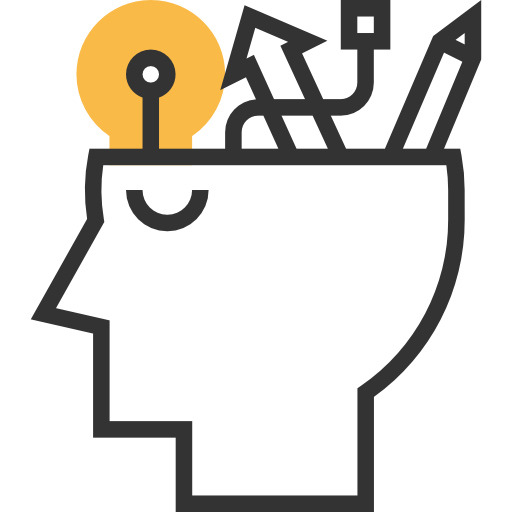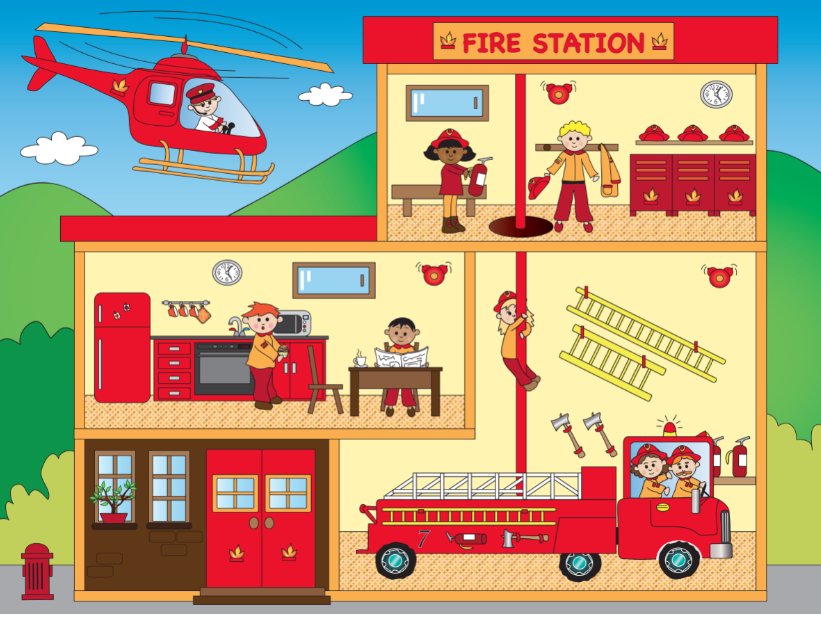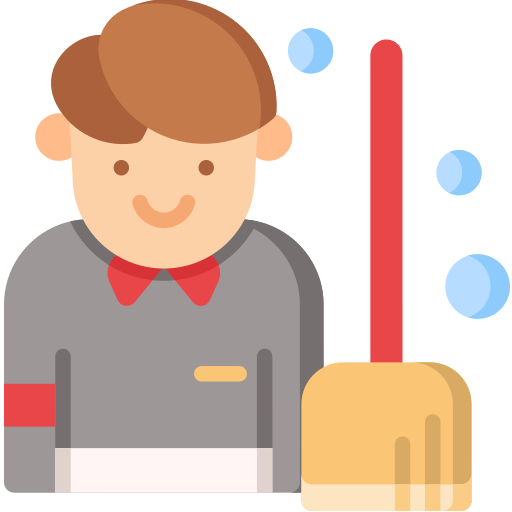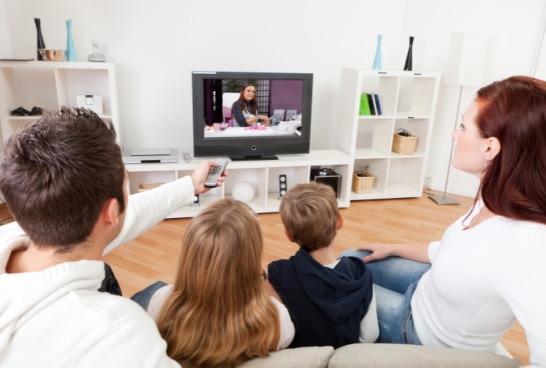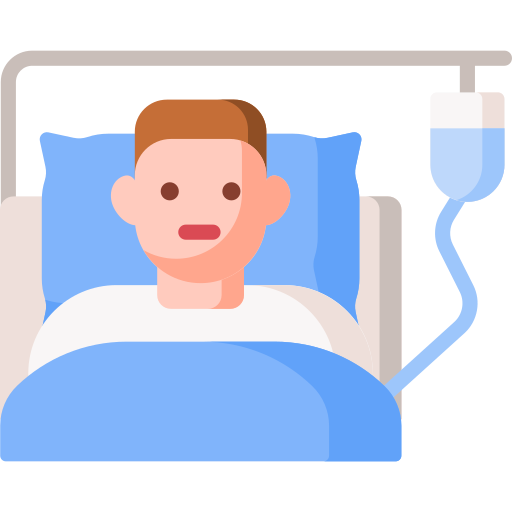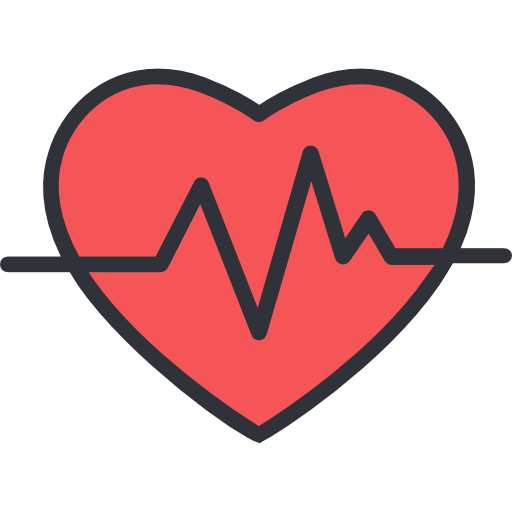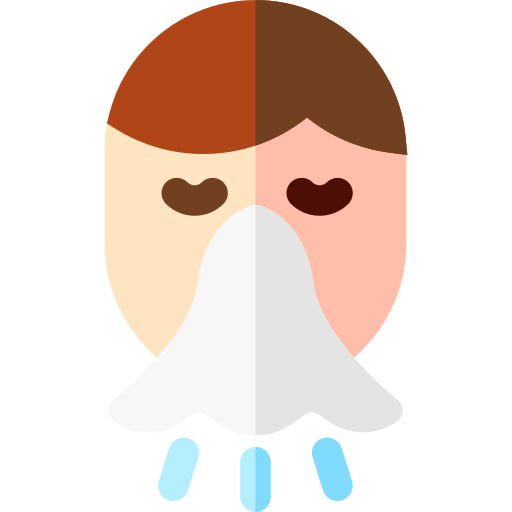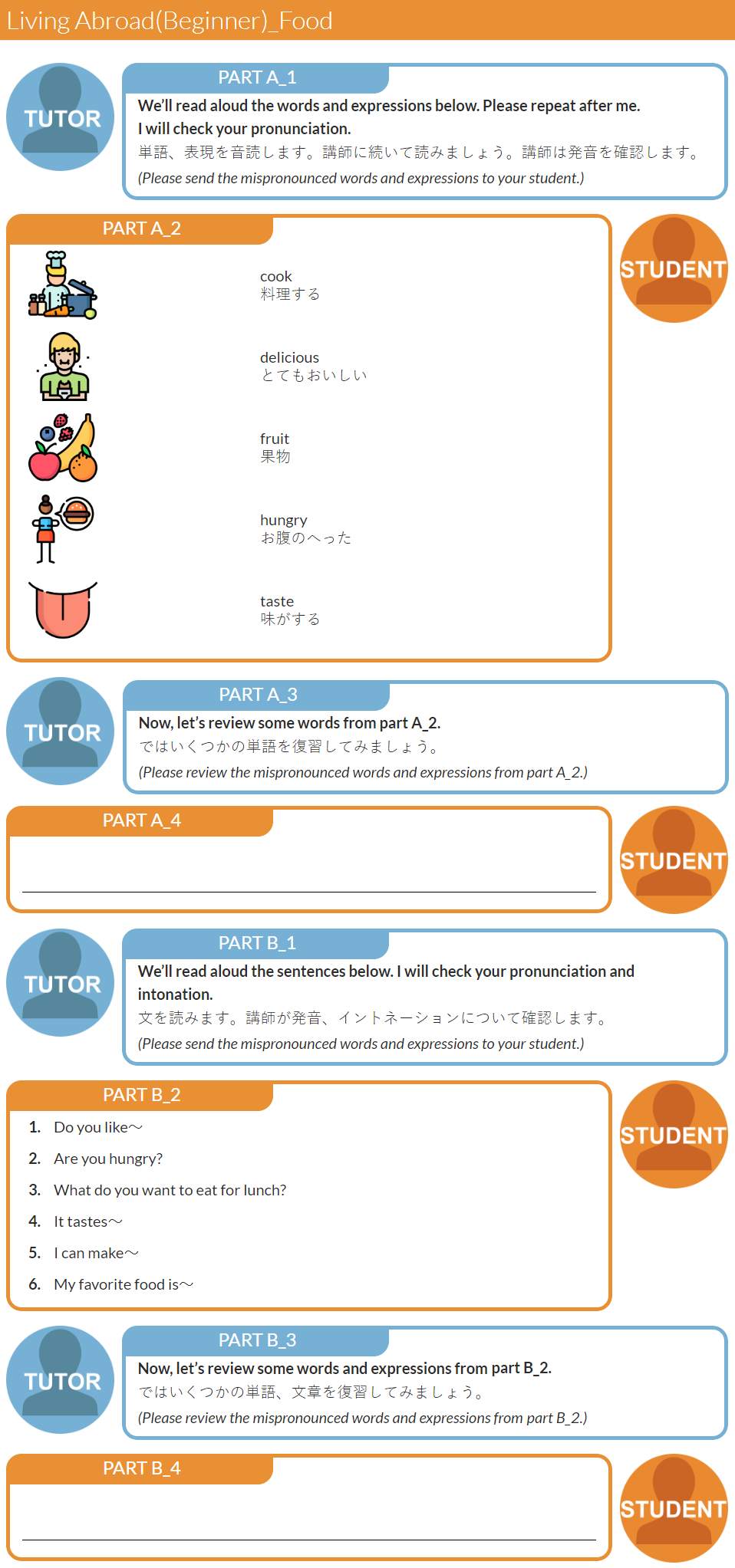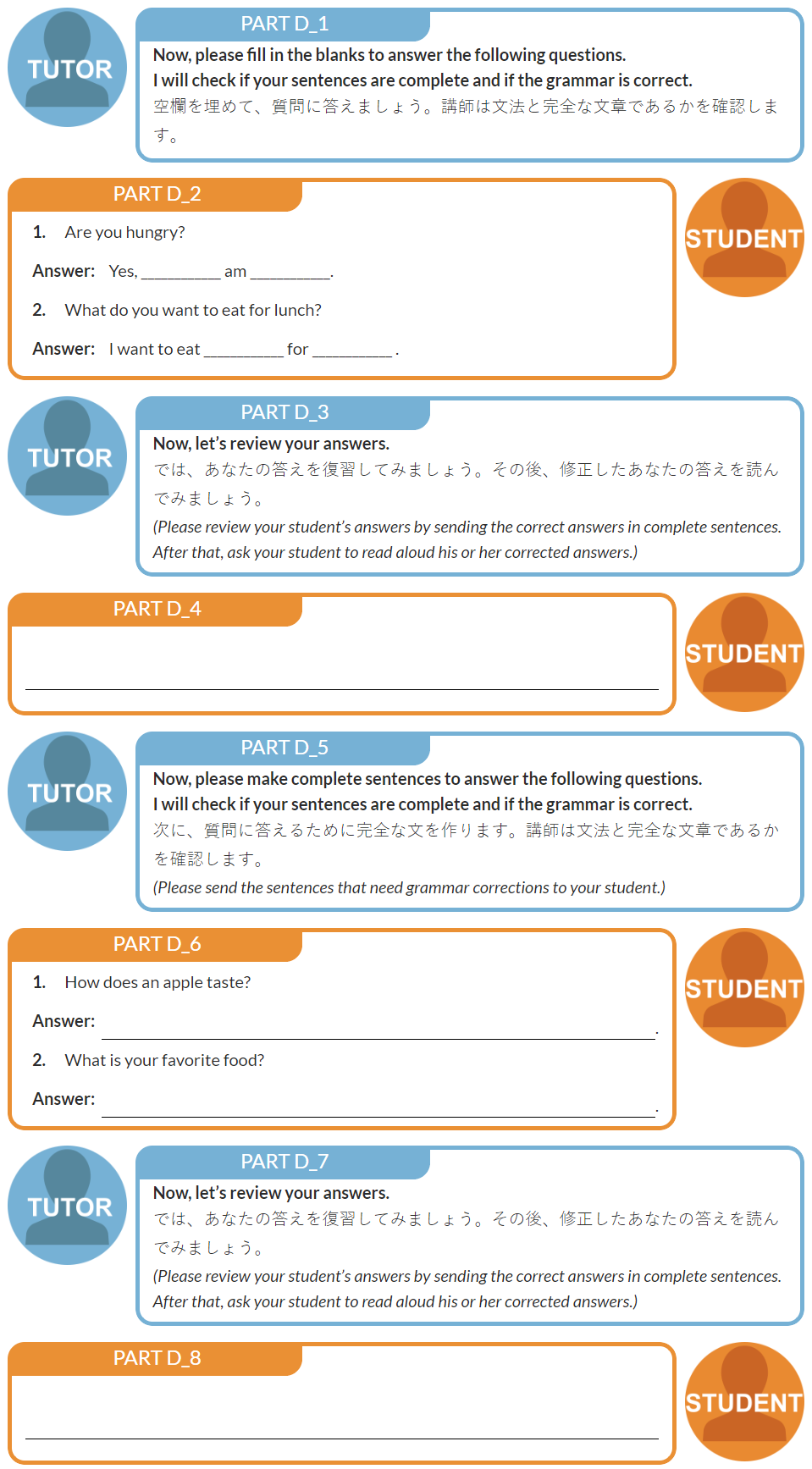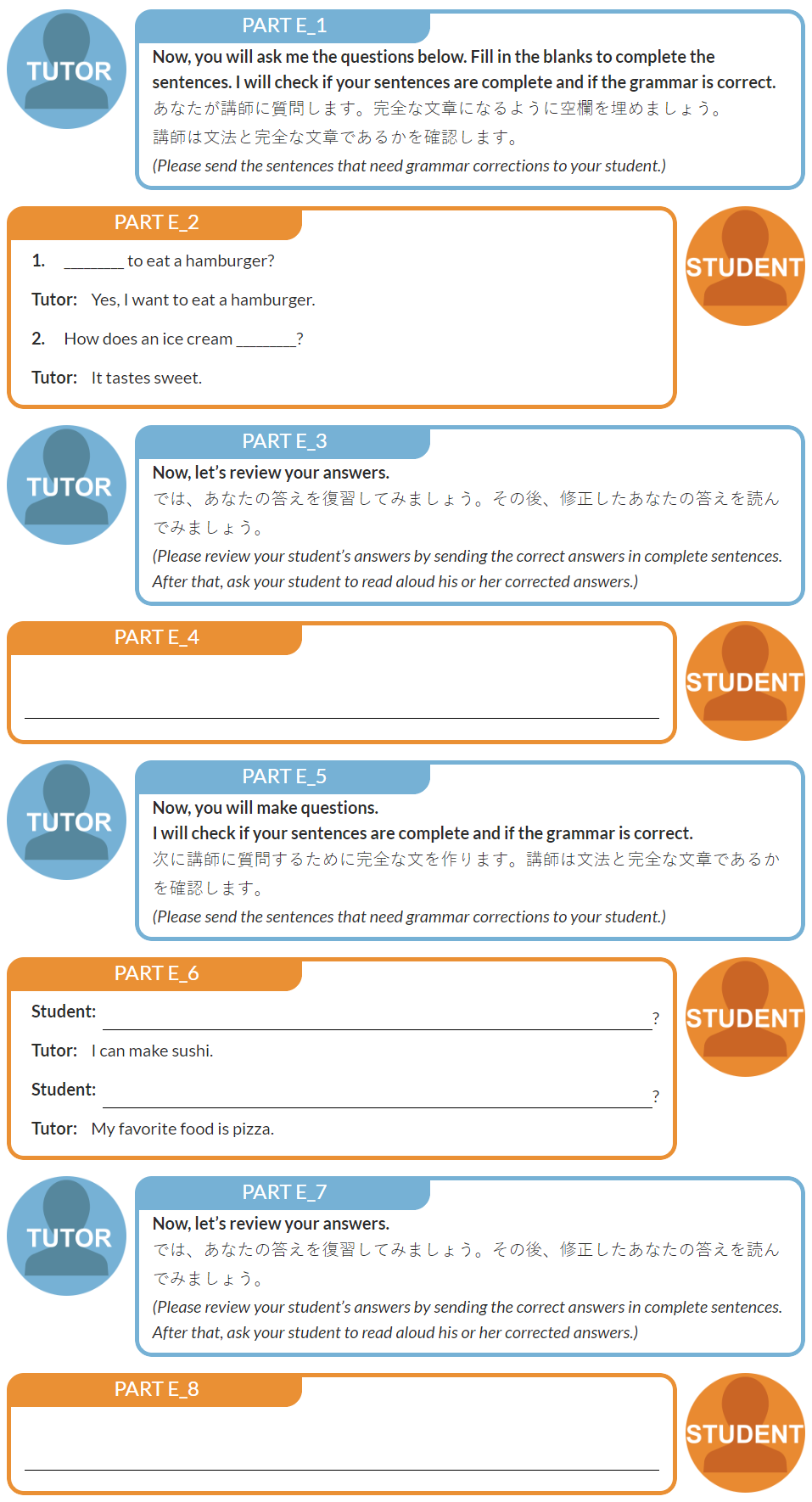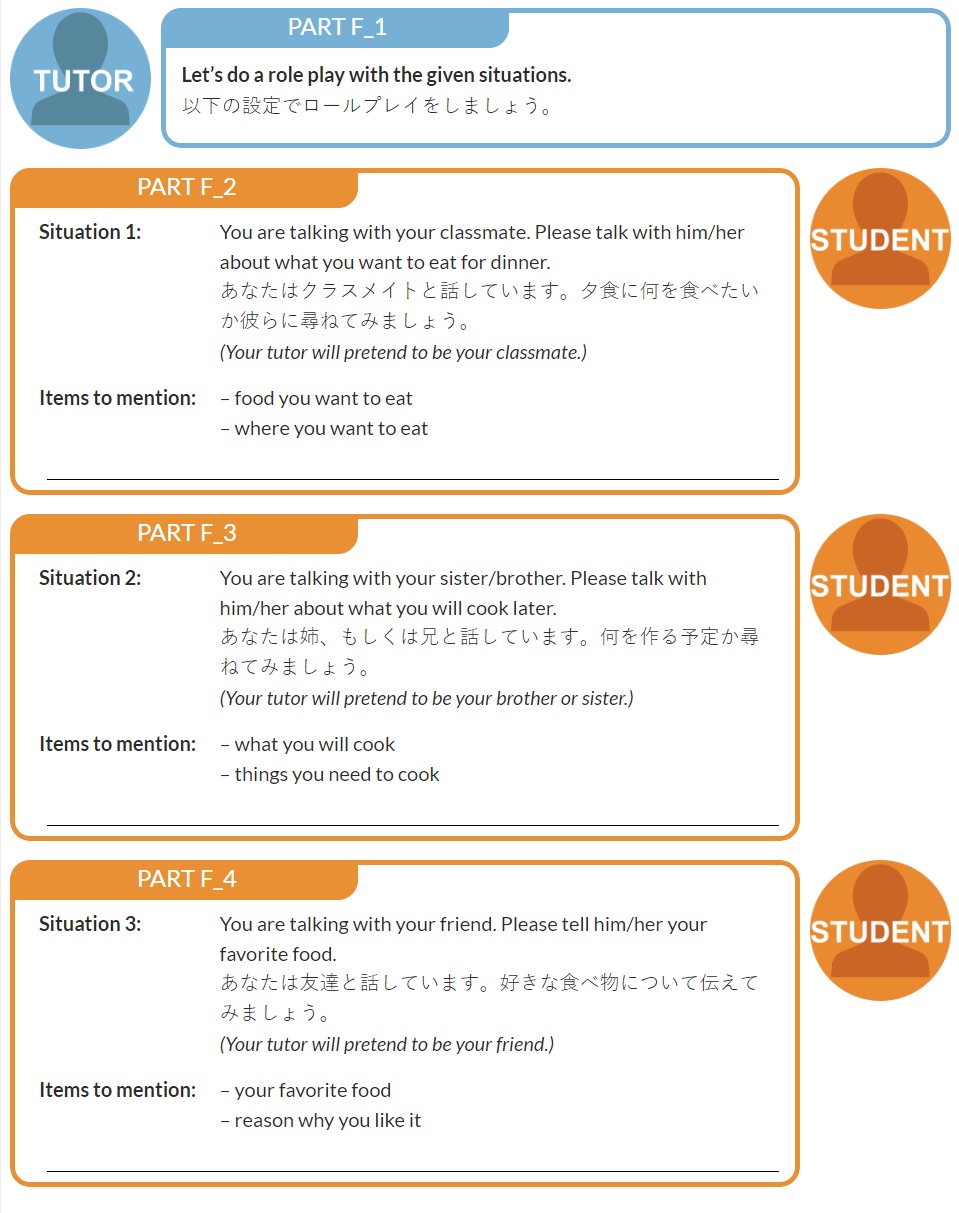PART A_1
I will point at each picture below. Then, tell me the things that you see in each picture.
講師が指し示す4つの絵の描写をしましょう。
PART A_2
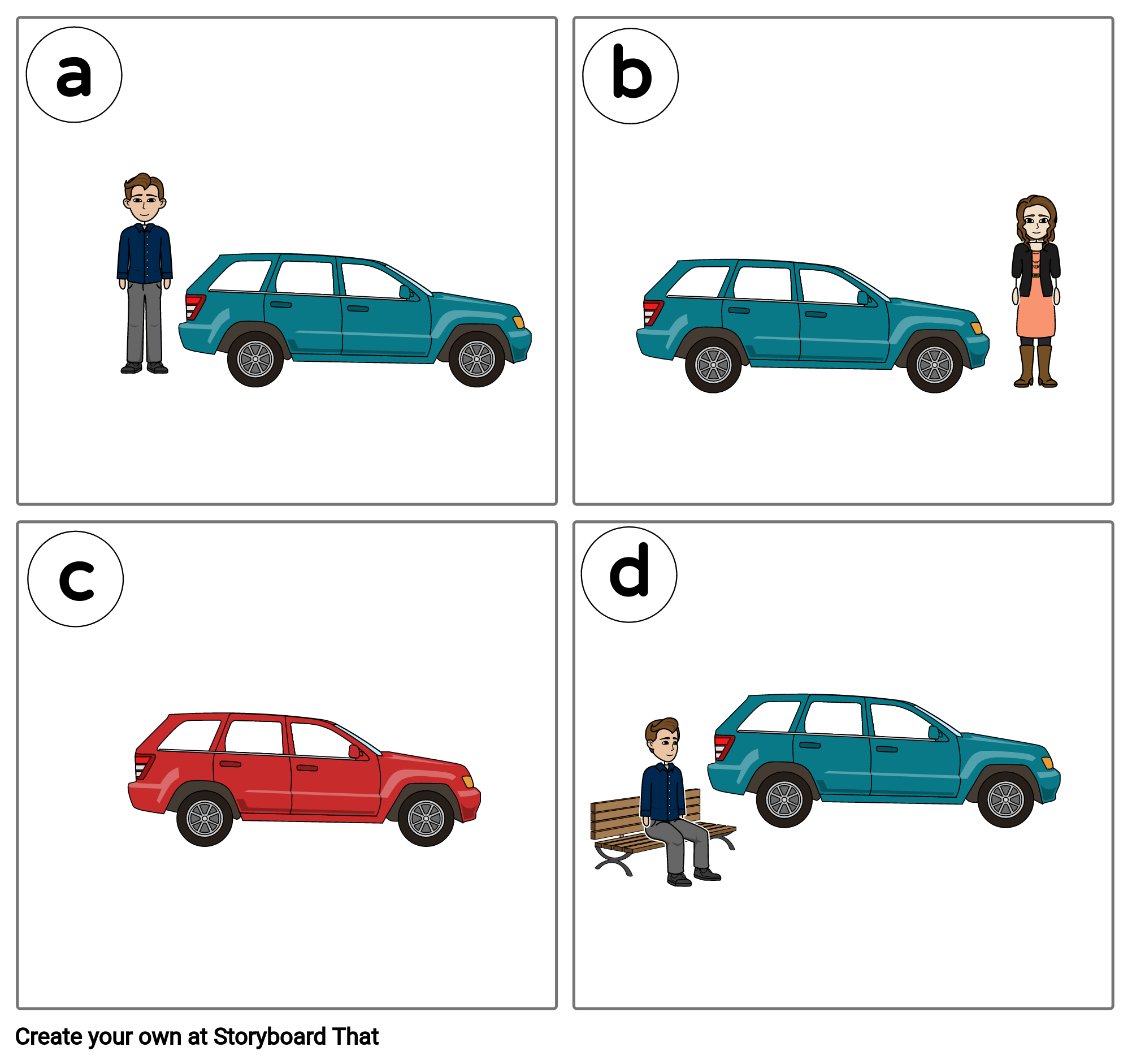
| 1. | What things do you see in picture a? | |
| Answer: | . | |
| 2. | What things do you see in picture b? | |
| Answer: | . | |
| 3. | What things do you see in picture c? | |
| Answer: | . | |
| 4. | What things do you see in picture d? | |
| Answer: | . |
PART A_3
Now, let’s review your answers.
答え合わせをしましょう
(Please type the answers in the chat box to guide the student.)
PART A_4
PART A_5
Please compare the pictures by telling me their differences. I will check if your sentence is complete and if your grammar is correct.
絵を比較し、違いを言ってみましょう。
PART A_6
| 1. | Compare picture a with picture b. | |
 |
||
| Answer: | . | |
| 2. | Compare picture a with picture c. | |
 |
||
| Answer: | . | |
| 3. | Compare picture a with picture d. | |
 |
||
| Answer: | . |
PART A_7
Now, let’s review your answers.
答え合わせをしましょう。
PART A_8
PART A_9
Please listen carefully while I read each sentence twice. Then, choose the letter of the picture that is described in each sentence.
講師が文章を2回読みます。よく聞いて、それぞれの文章の内容と一致する絵をaからdの中から選びましょう。
PART A_10

PART A_11
Now, let’s review your answers.
答え合わせをしましょう。
PART A_12
PART B_1
Please listen carefully and take notes while I read four dialogues. After I read all of the dialogues twice, please answer the questions below.
講師が1人2役で会話文を読むので、メモを取りながら聞いてください。会話文が2回繰り返された後に、以下の質問に回答しましょう。
PART B_2
| 1. | In the first dialogue, what did they talk about? | |
| Answer: | . | |
| 2. | In the second dialogue, what did they talk about? | |
| Answer: | . | |
| 3. | In the third dialogue, what did they talk about? | |
| Answer: | . | |
| 4. | In the fourth dialogue, what did they talk about? | |
| Answer: | . |
PART B_3
Now, I will ask you another question about the dialogue.
先ほど読み上げられた会話文について、別の質問に回答しましょう。
PART B_4
| 1. | Which of the four dialogues describes the picture below? |
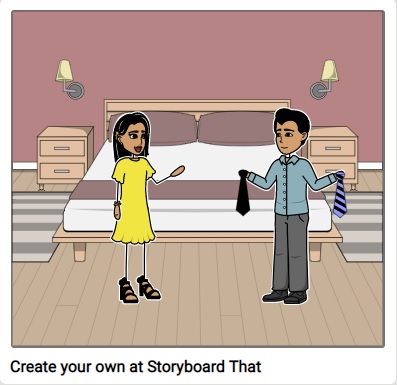
| Answer: | . |
PART B_5
Now, let’s review your answer.
答え合わせをしましょう。
PART B_6
PART B_7
Please listen carefully and take notes while I read four dialogues. After I read all of the dialogues twice, please answer the questions below.
講師が1人2役で4つの会話文を読むので、メモを取りながら聞いてください。会話文がそれぞれ2回繰り返された後に、以下の質問に回答しましょう。
PART B_8
| 1. | In the first dialogue, what did they talk about? | |
| Answer: | . | |
| 2. | In the second dialogue, what did they talk about? | |
| Answer: | . | |
| 3. | In the third dialogue, what did they talk about? | |
| Answer: | . | |
| 4. | In the fourth dialogue, what did they talk about? | |
| Answer: | . |
PART B_9
Now, I will ask you another question about the dialogue.
先ほど読み上げられた会話文について、別の質問に回答しましょう。
PART B_10
| 2. | Which of the four dialogues describes the picture below? |
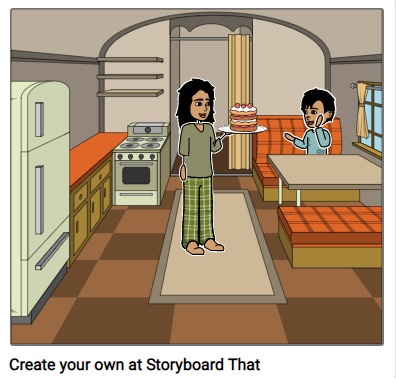
| Answer: | . |
PART B_11
Now, let’s review your answer.
答え合わせをしましょう。
PART B_12
PART C_1
Please listen carefully while I read each dialogue twice. Then, choose
the letter of the correct response to each dialogue.
the letter of the correct response to each dialogue.
講師が1人2役で会話文を読むので、メモを取りながら聞いてください。返答として正しいものをaからdの中から選びましょう。会話文はそれぞれ2回繰り返されます。
PART C_2
| 1. | Which one is the correct response? |
| a. | It was nice. |
| b. | How come? |
| c. | That’s good to hear. |
| d. | I don’t think so. |
PART C_3
Now, let’s review your answer.
答え合わせをしましょう。
PART C_4
PART C_5
| 2. | Which one is the correct response? |
| a. | I am not sure. |
| b. | Alright, it’s a date! |
| c. | Let’s think about that. |
| d. | What do you think? |
PART C_6
Now, let’s review your answer.
答え合わせをしましょう。
PART C_7
PART C_8
| 3. | Which one is the correct response? |
| a. | I’ll take note of that. |
| b. | Thanks! See you in 3 weeks. |
| c. | Could you please say it again? |
| d. | I have never heard about it before. |
PART C_9
Now, let’s review your answer.
答え合わせをしましょう。
PART C_10
PART D_1
Please listen carefully while I read each dialogue twice. Then,
you will answer a question based on the dialogue.
you will answer a question based on the dialogue.
講師が1人2役で会話文を読むので、メモを取りながら聞いてください。会話文が2回繰り返された後に、会話文に基づく質問に回答しましょう。
PART D_2
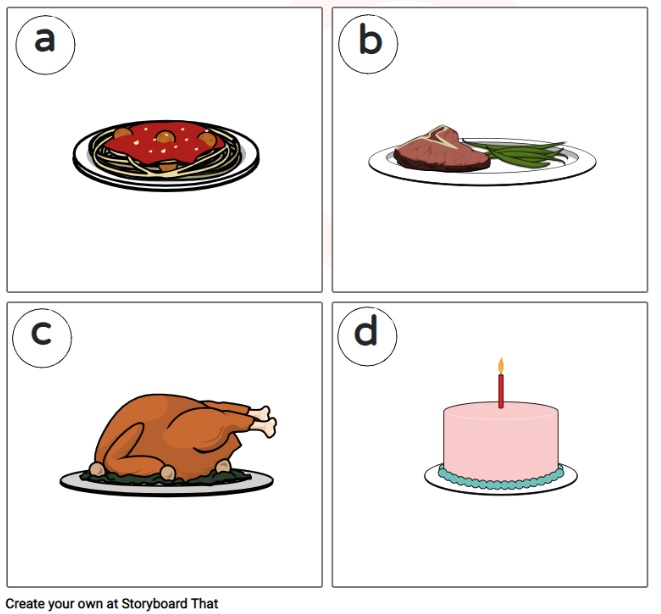
PART D_3
Now, let’s review your answer.
答え合わせをしましょう。
PART D_4
PART D_5
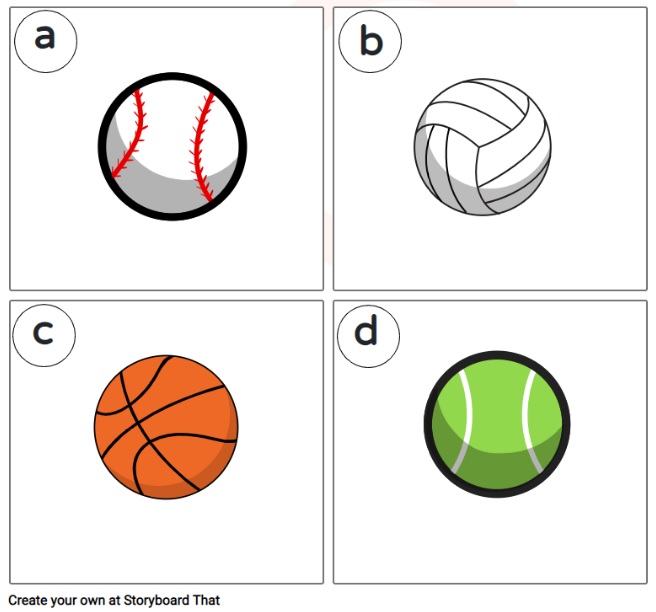
PART D_6
Now, let’s review your answer.
答え合わせをしましょう。
PART D_7
PART D_8

PART D_9
Now, let’s review your answer.
答え合わせをしましょう。
PART D_10
PART E_1
Please listen carefully while I read each dialogue twice. Then, you will answer a question based on the dialogue.
講師が1人2役で会話文を読むので、メモを取りながら聞いてください。会話文が2回繰り返された後に、会話文に基づく質問に回答しましょう
PART E_2
| 1. | What is the man planning to do next summer? |
| a. | The man is planning to go to the beach. |
| b. | The man is planning to go to Thailand. |
| c. | The man is planning to eat Thai food. |
| d. | The man is planning to have fun. |
PART E_3
Now, please tell me the reason why you think that is the correct answer.
回答を選んだ理由を講師に説明してみましょう。
PART E_4
PART E_5
Now, let’s review your answer.
答え合わせをしましょう。
PART E_6
PART E_7
| 2. | What time should they be at the airport tomorrow? |
| a. | They should be at the airport by 11:00 a.m. |
| b. | They should be at the airport by 8:00 p.m. |
| c. | They should be at the airport by 7:00 a.m. |
| d. | They should be at the airport by 8:00 a.m. |
PART E_8
Now, please tell me the reason why you think that is the correct answer.
回答を選んだ理由を講師に説明してみましょう。
PART E_9
PART E_10
Now, let’s review your answer.
答え合わせをしましょう。
PART E_11
PART E_12
| 3. | Why is the man not feeling well? |
| a. | He has a serious condition. |
| b. | He is tired from work. |
| c. | He could not eat well. |
| d. | He always sleeps late. |
PART E_13
Now, please tell me the reason why you think that is the correct answer.
回答を選んだ理由を講師に説明してみましょう。
PART E_14
PART E_15
Now, let’s review your answer.
答え合わせをしましょう。
PART E_16





